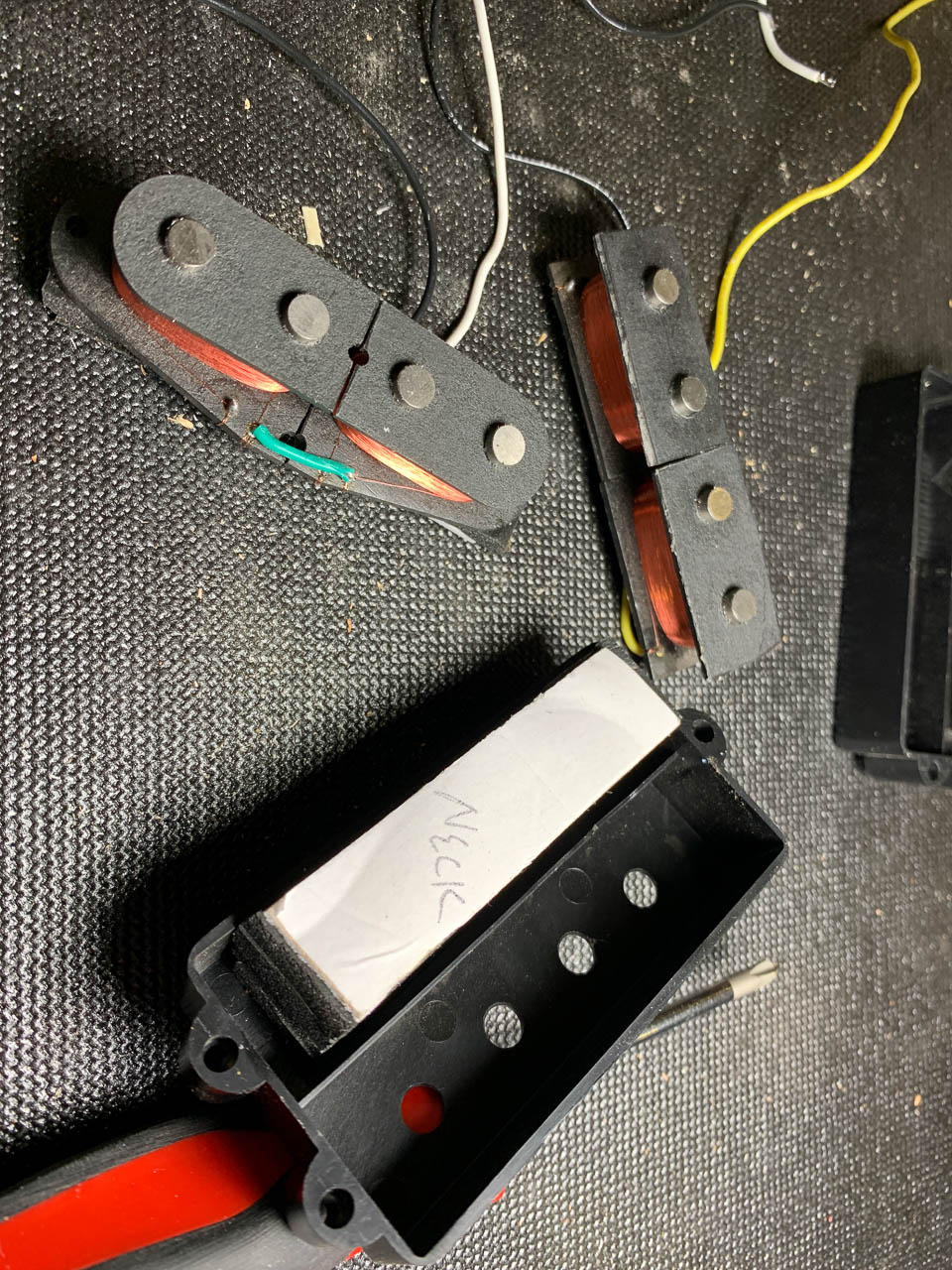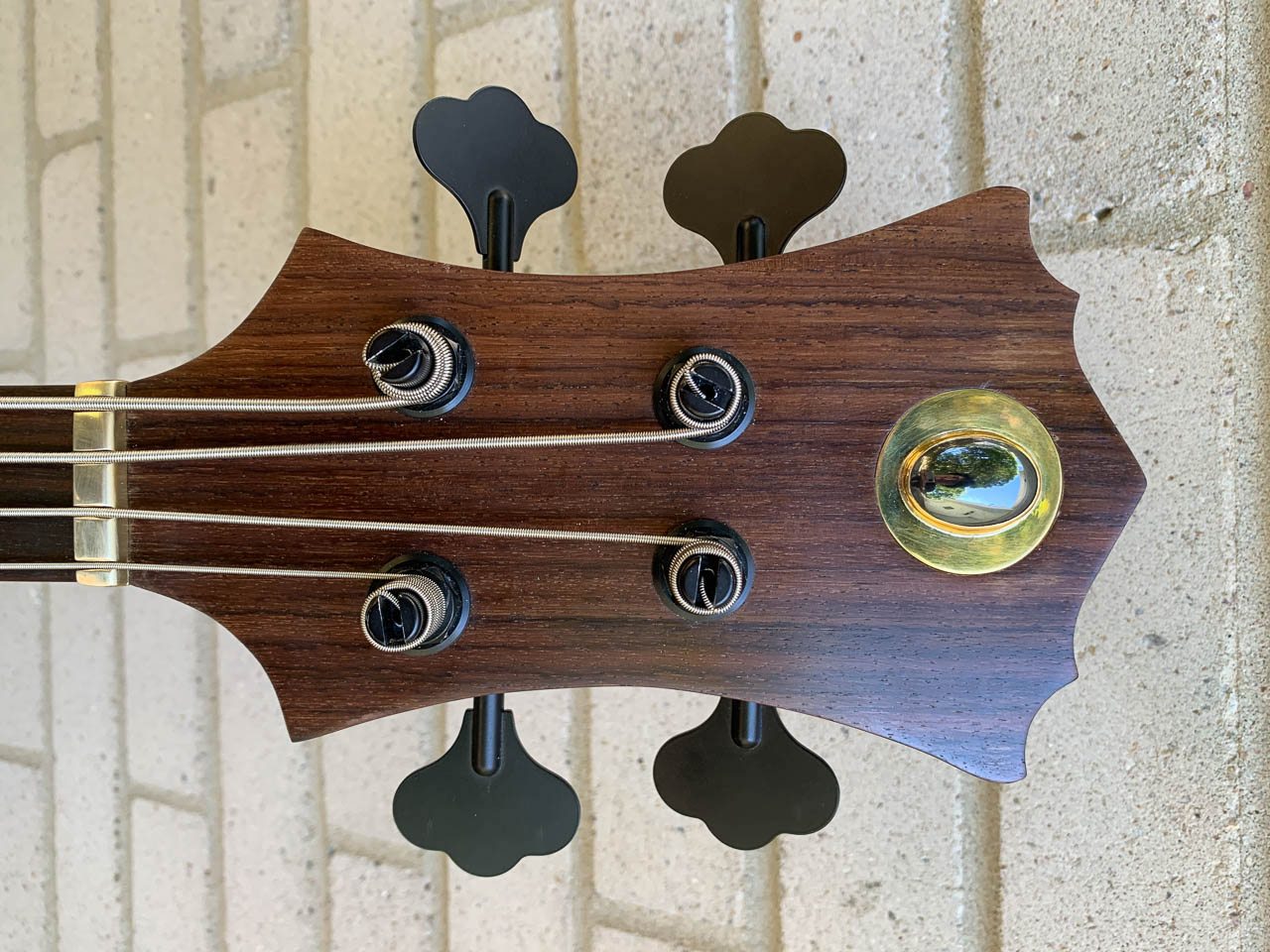Building solid body instrument is not really rocket science, and most of the secrets in building were being revealed in the pass several decades. The truth is, there’s not that much of secret, building things precisely, carefully, with musicians in mind on what/how they need and how an instrument can possibly help would be the key.
Here comes a bass built locally from Toronto by Chris Seldon(Chris Seldon Guitars / aka Owl Bass) and here’s some thoughts of mine to share.
Background:
Chris and I were connected over the internet in 2019 after I was some of his proto type basses being featured on other web medias .. I was then invited to his work space to try out some of his works . They were decent, and there’s no surprise that the ‘shop bass’ got the most attention and love throughout the build, it was full of characters .. After knowing his background was actually the marketing person for Yamaha Canada then decided the pursuit his luthier path, I thought he’s relatively talented as an new guy in the business, that was the time when I had a bit spare money to spend on a new bass. As a fan of short scale basses. I ordered one hoping I can get something great while supporting local builders. I was first promised to get the bass in 1 month but it was ready probably after 12 weeks instead .
Specs:
* 32" scale / 22 frets / 16" FB radius / 19mm string spacing
* nutwidth is a hair over 1.5" , solid brass nut
* 2 pc African Mahogany body in oil / wax finish
* 3pc Roasted Maple/Padauk neck in setneck construction in vintage C profile
* East Indian Rosewood fingerboard
* Medium nickel silver frets
* 2 way adjustable truss rod
* 2 X Canada made Rainville Audio linear humbucker, these are split coil pickups in MM style housing.
* Hardware: Hipshot A bridge / ultralite tuner
* Passive Controls: Volume / Tone / 3 way toggle
* Roughly 8.5lbs
* Levy's EM8S gig bag
Playability:
The wood works were decent . Neck was set in the right angle, just had some glue marks showing. but unfortunately the fretwork of this bass was pretty awkward ... I’m sorry to say that but even my Squier bass has better fretwork . Fret edge weren’t file to an proper angle and the edges were sharp and it cuts. I talked to Chris soon after that and he thought is the change of weather that was causing the issue ..
I had to send it back with a few other thigns:
- fretwork
- 1 pickup pole was sounding weak
- shielding
My main concern was the fretwork, and bass came back after a week-ish. the improvement was minor, pickup was fixed, and foil were added into the cavity. I had to spend another few hours dressing the frets myself .. and after that The bass had became a well balanced, 32” scale fun to play . This is a fairly musical instrument ..
Sound:
When I first brought it home, one of the magnet pole on the bridge pickup was weaker than the others. .. of course, I tape a quick video with me tapping each magnets showing the difference in volume , Chris thought I was just making noises there and claimed he couldn’t hear the difference .. oh well .. the bass was sent back later and got repaired .
The bass was very bright with the stock 250k pot .. and the tone had to be near fully closed most of the time to have a playable bass sound that I like . That’s probably the personal preference thing, I had to experience with many different pot and tone cap to find one should be 50k or 25k on volume and a more darker sounding tone cap to utilize the range on the tone pot. Took me a while again to have things in the way that suites my liking. Sound wise, this bass is very much like a passive precision with a hot bridge pickup, a hot split coil on the bridge position for the growly focus sound .. I went with the 3 way toggle for fast pickup switching and absolutely love it as I never really blend the 2 pickups beside having them full on for that mid schoop sound. The character of Indian rosewood fingerboard is clear, the warm pillow like low that wraps around . Oil finish also breathes and turn out to be a good combination and gives that raw rock bass vibe ..
Thoughts:
Well .. I’ve spent so much time on this bass to put it into the way I want .. also learnt more about myself throughout the process . One major issue to me was the moment I removed the mm style pickups trying to find out the wiring options and noticed they are just split coils putting in line and called ‘linear humbucker’ .. the other half of that pickup was filled with foam ... that’s the moment I started to question ... what’s the point to remove the wood and fill it with foam? Probably just to get that rockish look ... oh well . 
And not long after that Owl bass was rebranded to Chris Seldon Guitars . I do hope local people can come up with more quality / thoughafter products and I was impressed by the shop bass when I first played it . But I guess the challenge of a 1 man shop is to have that consistency in terms of quality . In the past 5-6 years, there seemed like have more new ‘boutique’ brands that puts brand name hardware / parts on their builds and instantly put a $3k+ usd price tag, some of them put fancy wood top and ask for more. It's really no secret, but people often forgot able the principle about making an instrument or had hard to maintain that process when things gets repetitive ...
I still look forward to what Chris is building next as he’s constantly trying out different ideas. But at this moment, I would probably only buy a stock instrument that I get to play first before committed with a purchase. Wish him all the best hoping he can sustain his luthier dream.
Gallery:
Video:
